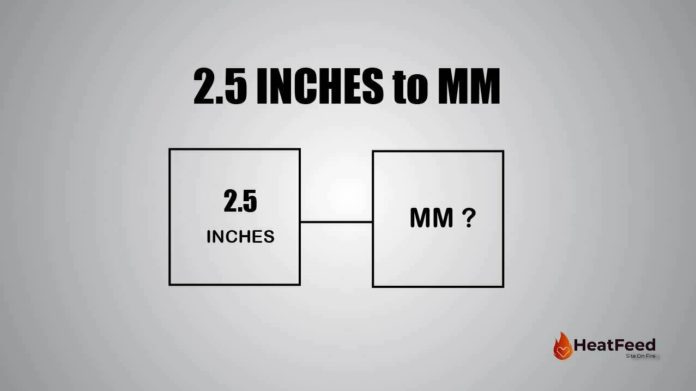Are you grappling with the conversion from inches to millimeters? Look no further! In this guide, we’ll unravel the mystery of converting 2.5 inches to millimeters effortlessly. Whether you’re a DIY enthusiast, a craftsperson, or simply dealing with measurements in your profession, mastering this conversion can save you time and headaches. Let’s dive in:
Understanding the Basics: Inches vs. Millimeters
Before we delve into the conversion process, let’s brush up on our measurement fundamentals. Inches and millimeters are units of length, with inches being the standard unit of measurement in the Imperial system, primarily used in the United States. On the other hand, millimeters are part of the metric system, widely adopted across the globe.
Why Convert 2.5 Inches to Millimeters?
You might wonder, why bother with conversions at all? Well, the need arises when you encounter measurements in different units and need to compare or work with them seamlessly. In this case, transforming 2.5 inches to millimeters allows for consistency and compatibility, especially when dealing with international standards or specific project requirements.
The Conversion Process: From Inches to Millimeters
Let’s cut to the chase. Converting 2.5 inches to millimeters involves a straightforward mathematical equation. Here’s how it’s done:
- Know the Conversion Factor: The conversion factor between inches and millimeters is 25.4. This means that 1 inch is equivalent to 25.4 millimeters.
- Apply the Formula: To convert inches to millimeters, simply multiply the number of inches by the conversion factor (25.4).
Putting it into Practice: Calculating 2.5 Inches in Millimeters
Now, let’s crunch the numbers:
2.5 inches×25.4 millimeters/inch=63.5 millimeters
Voila! You’ve successfully converted 2.5 inches to millimeters. The result is 63.5 millimeters.
Practical Applications: Where Does it Matter?
You might wonder where such conversions find practical use. Well, imagine you’re working on a woodworking project, and the blueprint specifies dimensions in millimeters, while your measuring tape displays inches. Converting measurements ensures accuracy and consistency in your craftsmanship.
Conclusion: Mastering the Conversion Game
In conclusion, converting 2.5 inches to millimeters is a fundamental skill that can come in handy in various scenarios. By understanding the conversion process and applying it effectively, you empower yourself to work seamlessly across different measurement systems. So, the next time you encounter a measurement dilemma, remember this guide and convert like a pro!
Read More:3/16ths to mm Conversion Made Simple




